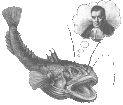UW Aquatic & Fishery Sciences Quantitative Seminar
Harry Podschwit
Quantitative Ecology and Resource Management program, University of Washington
Reconstructing the daily area burned of individual wildfires using a Bayesian Hierarchical Model
Abstract
The statistical analysis of wildfire activity in the United States has long been critical to the planning of suppression operations and geophysical research. Wildfire activity is often described in terms of eventual fire size. However, wildfire activity is better described using a variety of incident-level growth statistics. Calculation of these statistics may rely on various types of incident-level repeated measures data, including GPS and remote sensing technologies. However, it is well known that this data is sometimes incomplete or has significant measurement errors associated with the true daily area burned. On the other hand, we can constrain wildfire development to a set of rules that most would find reasonable and we often have prior knowledge of how our measurements depend on the true burn area. Hence, in this talk we will introduce a Hierarchical Bayesian framework for estimating the daily burn area of wildfires within the continental united states. In this framework, the true burn area will be modeled as a hidden/unobservable process governed by both an autonomous and non-autonomous version of the Beverton-Holt difference equation. This hidden process will then depend on the burn area measurements within the process level of the framework. This framework is applied to a set of wildfire growth data from two different sources: GeoMAC fire perimeters and Hazard Mapping System (HMS) remote sensing data to estimate the complete trajectories of thirteen wildfires from the 2014 fire season. This talk will conclude discussing future work including model sensitivity analysis and extending the framework to include covariates.

